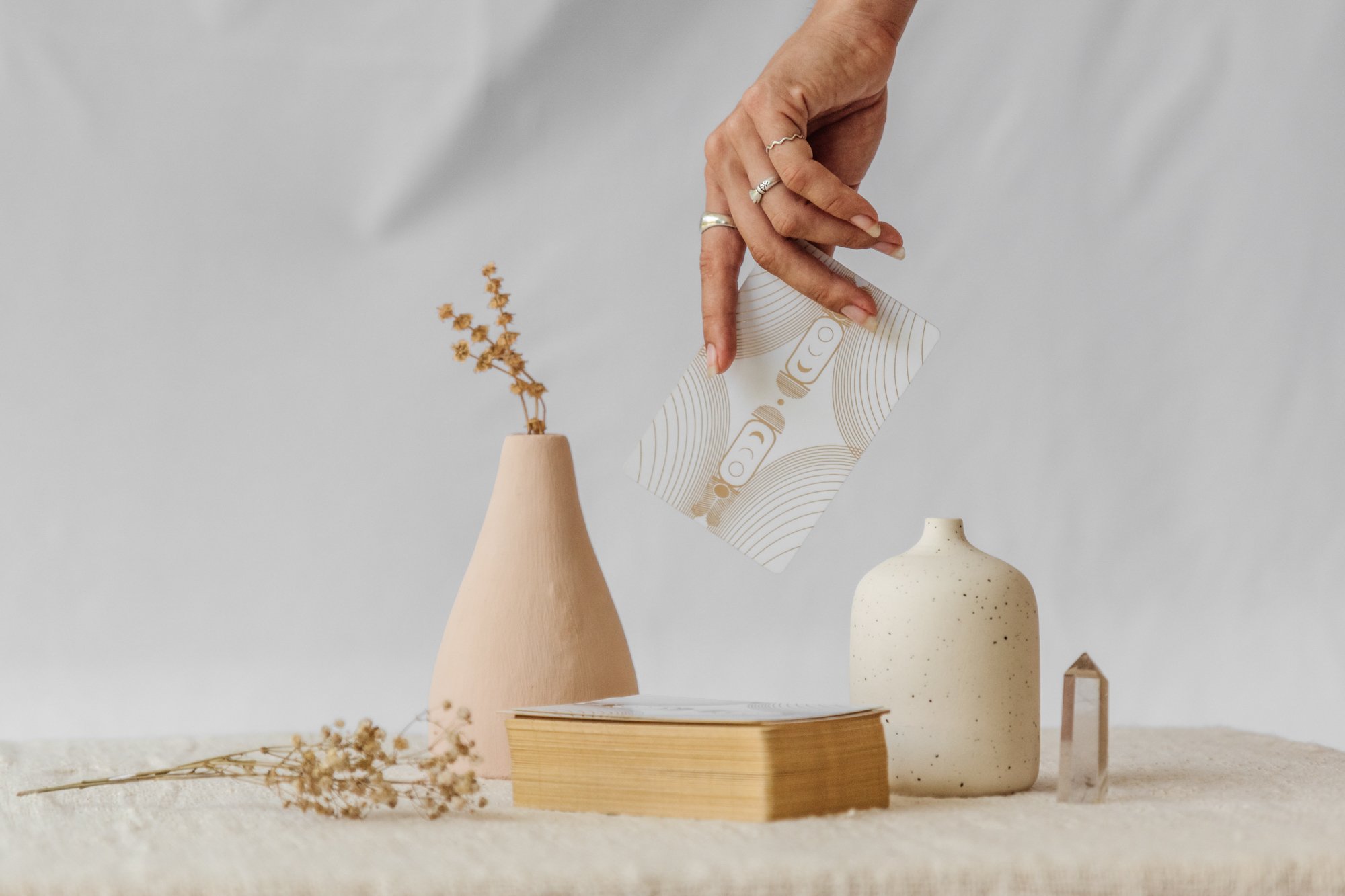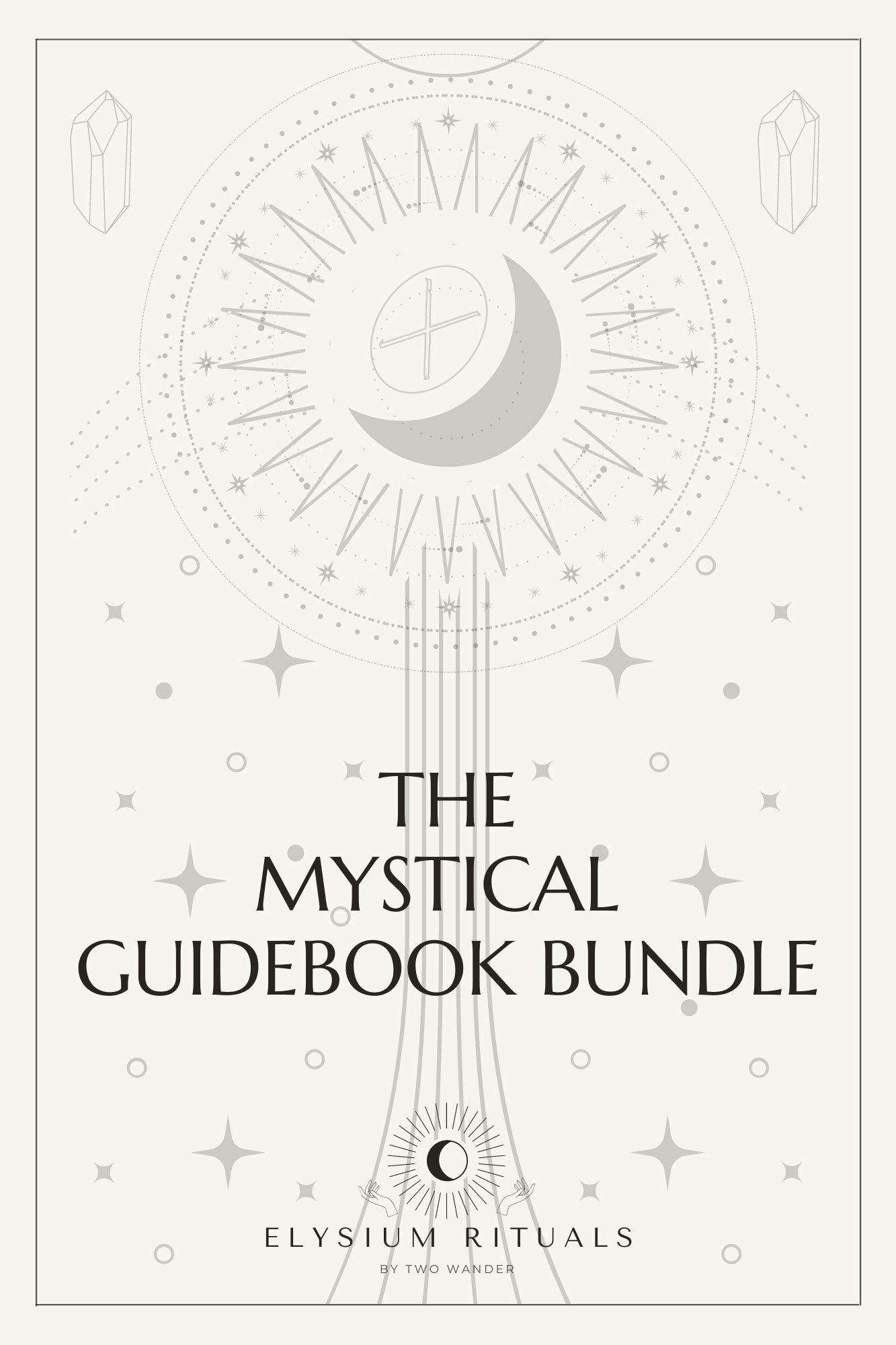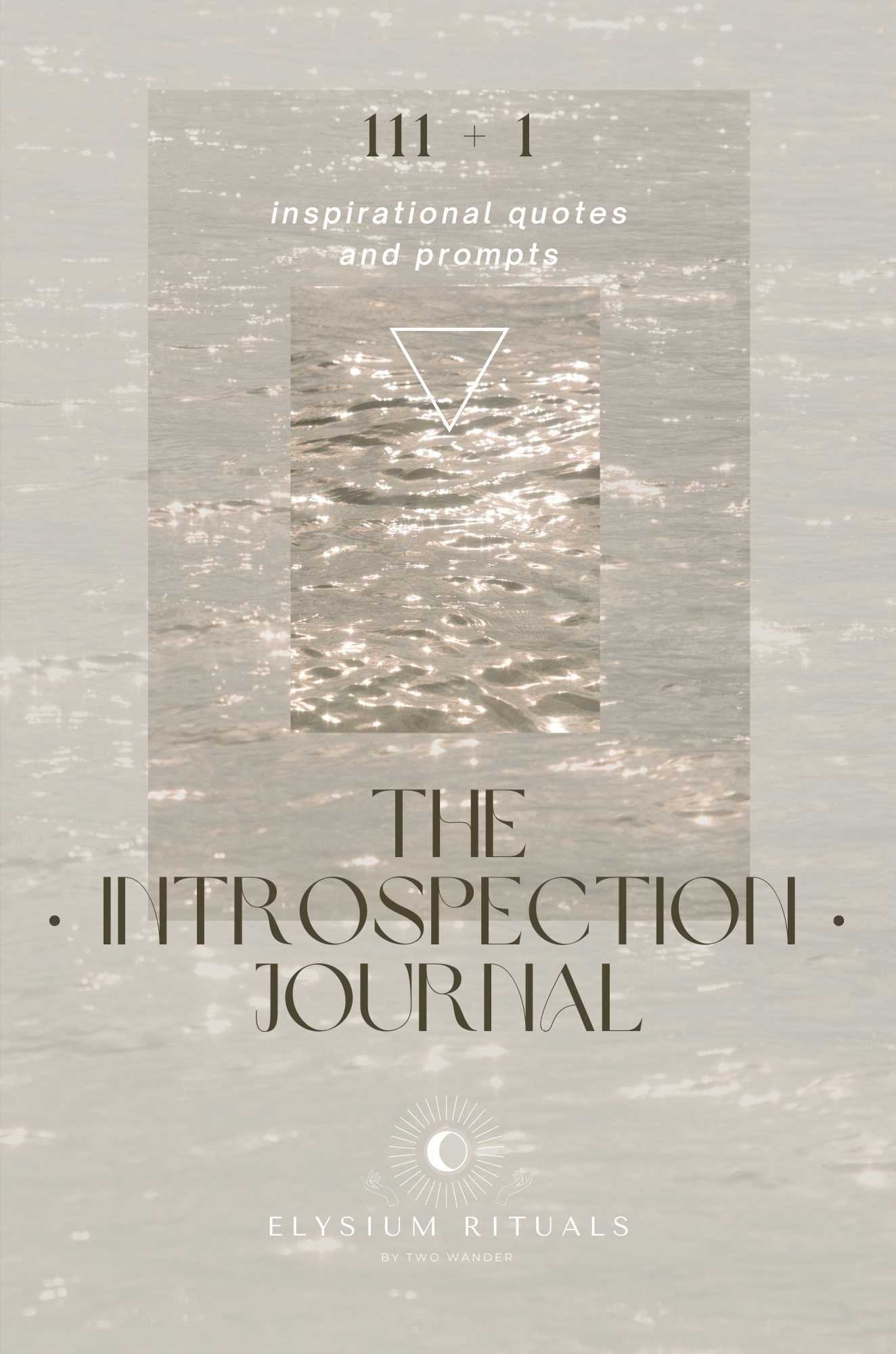How To Learn Tarot Intuitively
This post may contain affiliate links, if you purchase through them we may receive a small commission at no extra cost to you. By using these links you are directly supporting us to continue creating free mystical musings. Thank you!
What Is Intuitive Tarot?
Intuitive Tarot for me is reading in a way that is organic and aligned with you personally, it is like crafting a language which only you speak. Intuitive Tarot is read beyond the basic definitions found in deck guidebooks, although it has a foundation of traditional keywords- you need to know the rules before you can break them!
Reading Tarot is already innately an intuitive act, each card has so many significations- how do we know which one is “correct” on the moment?
Learning to read the Tarot is one the BEST methods for strengthening your own intuitive muscle and connection to an inner knowing as well as source energy/higher power/spirit guides etc.
The best intuitive Tarot readings combine the magic of personal intuition, insight, and visions with a strong knowledge on the tradition of the craft.
If you already have a solid basis, scroll to the bottom of the post for how to read Tarot cards intuitively:
How To Learn Tarot Intuitively
Learning Tarot is a personal, and lifelong, process. Learning it intuitively takes time and dedication. Here are my favourite methods for how:
1.Books
The starting place for many of us, books are the go-to method for learning Tarot, and most things really. Books are wonderful because they often contain images to help the message really, and some come with interactive prompts. They are also particularly useful when first starting out because you can refer back to them! Again, you can’t become an intuitive Tarot reader without first knowing the basics.
My personal favourites are: 78 Degrees of Wisdom by Rachel Pollack; Holistic Tarot by Benebell Wen; Modern Tarot by Michelle Tea; and 36 Secrets by T. Susan Chang.
I also have my own Beginner’s Guidebook you can access here. Check out my post on The Best Tarot Books for more options!
2.Podcasts
This is one of my FAVOURITE ways to explore the Tarot, but of course it all also depends on your own personal learning style, this is why I recommend a variety- to get all the bases covered for yourself. Podcasts are not only a wonderful audio learning tool in general, they are useful for being more current, informal, and accessible information. I love to listen to them while driving, cleaning the house, or sunbathing (according to some studies, knowledge is also better digested this way)!
The best ones for me are: Tarot for the Wild Soul; Fortune’s Wheelhouse; and Between The Worlds.
3.Practice!
Of course, learning how to read the Tarot (and especially intuitively) comes with time and the development of your own personal journey and definition of each card, beyond what you will see/hear online.
Practicing with yourself over an extended period of time is essential for bringing their wisdom into your psyche and creating your own Tarot language. Many practitioners do a daily one or two card pull, this is lovely for not only getting a feel for the day, but also for seeing how the messaging of the cards evolves over time and on a mundane level.
Then, a weekly check-in can be a nice, as well as additional monthly spreads and/or aligned with the cosmos (such as Full Moon readings). Once you are comfortable enough reading for yourself, you can move on to friends and family.
Once you feel comfortable with your loved ones, you can then move on to strangers. Even if you never intend to read Tarot professionally, I still recommend practicing on people you don’t know because something truly magical happens when you can read succinctly and accurately for someone you know nothing about! THIS is where your intuitive muscles really get to flex themselves. There are many Facebook groups where you can offer exchanges.
4.Journal
Journalling is a really useful way to digest the wisdom of the cards and, especially, return back to. Sometimes, particularly when just starting out, a reading won’t make sense to us on the moment; but if we jot it down and return to it later, more often than not its meaning becomes obvious.
Journalling is also a good way for your own processing, the literal act of getting pen to paper allows the brain to work through itself. If you continuously write in a stream-of-consciousness style without stopping as well, you can also access intuitive or subconscious insight.
In the beginning, when first learning the definitions of each card, writing them down is an effective way for the definitions to stick. Then, over time, it will also help you to develop and mature your own relationship with the Tarot and your spreads, as well as deepen your level of understanding and knowledge of them.
Some people also like to draw or paint their own Tarot cards, whether artistically inclined or not, this can help access alternate meanings in the archetypes.
Documenting the content you learn also helps you see how far you’ve come! Labyrinthos has beautiful journals specifically for Tarot.
5.Courses
If you are really serious about going in deep with the Tarot, a course is one of the best ways for covering all bases- audio, visual, written, practical- and helping to cement the practice into your life and integrate a more nuanced meaning.
You can enrol in my Tarot for the Intuitive Seeker Course here! Lindsay Mack also has a library of courses here.
Taking a professional course has an added level of dedication and commitment that befits a receptive relationship with the Tarot, treat it with respect and it will treat you with respect as they say!
6.Communities
Finally, finding community online and IRL is a useful way to converse, practice, engage, and get involved with the Tarot. If you are passionate about it, is a fulfilling tool to use not only for expanding your repertoire of meanings for each of the cards, but also for connecting with other enthusiasts and like-minded people.
I give daily Tarot pulls on my Instagram account here, and I also love Jessica Dore’s Tarot interpretations, as well as Crow Mother Channelling, and Valentine Tarot’s.
In this vein, Patreon is also a useful platform to join, Rashunda Tramble has a popular account.
Other than that, I would be mindful of Tarot information you find online, while it is useful to Google descriptions, some of them can be quite basic, outdated, or downright harmful; I am yet to find a Tarot blog that resonates (please let me know if you can recommend one)! Of course, I endorse my own and you can see all my posts on Tarot here.
Looking in your local area for live workshops is also always a lovely way to learn and connect with other Tarot enthusiasts! Online, I also have a Workshop on How to Learn Tarot Intuitively here.
7.Experiment with Different Decks
Finally, when pilgriming along your intuitive Tarot journey, it can be useful to experiment with different decks to see which imagery and energy resonates with you most. As you are looking to create your own Tarot language essentially, informed with your own lived experience of it- built upon the wisdom of others but free from rote memorisation of any one source- it is important to have a Tarot deck that speaks to you personally.
You might find that you are called to one deck in the beginning and then outgrow it as you progress, or you might cycle through decks or pick one intuitively moment to moment. Either way, get to know each one intimately and build a relationship over time, the more you speak with it the clearer you’ll hear what it has to say to you in return.
The one caveat is that in general most teachers, myself included, recommend at least starting with the Rider Waiter Smith deck because this is the basis for which almost ALL other decks in circulation are created, it is also highly intuitive and possible to discern many of the meanings simply from the imagery alone.
Then, if its style doesn’t align for you, when you are comfortable enough with the basic card meanings, you can move on from it. But it is advised to get comfortable with the Smith Rider Waite Tarot deck first because this will make it easier to transition between other decks, especially those that include non-pictorial pip cards or that are more abstract.
Personally, I also suggest the Thoth deck next because this is the second-most popular Tarot system in use and incorporates Astrology, if this is something you are interested in integrated at a later date.
See my list of the Best Tarot Cards here.
How To Read Tarot Intuitively:
Lastly, for how to specifically do a Tarot reading intuitively, this will also come with practice and confidence with the cards. Over time as your intuition and connection to your deck grows stronger, it will flow more smoothly and intuitively.
Before beginning a Tarot card reading, I always recommend taking a moment to ground and centre yourself, this can be done simply by taking a few deep breaths, closing your eyes, and maybe envisioning your roots growing into the centre of the Earth, whatever calls to you. Then, you can call upon the assistance of your Spirit Guides, Guardian Angels, Spirit Self, Future Self, Well Ancestors, Source Energy, or simply your intuition and the wisdom of the cards or anything else that resonates if you like. Some people like to cleanse their space beforehand with smoke or incense or light a candle, perhaps invoking the elements, but this is not necessary. At the very least, a quiet space where you won’t be disturbed is useful.
You might like to tap on your deck three times or blow on it, clearing your mind as you shuffle, and then clearly stating your question in an open-ended way, either out loud or in your mind. Be specific on how you will cut, reassemble, and pull the cards and into which spread you will place them.
As you pull your cards, note your first impressions on each one, what sensations are present as well as any images or thoughts that jump to your mind. Then, carefully go through each one and weave together a story, anchoring it to their position in the spread, in relation to each other, and in the context of the question. If you get stuck, literally just describe what you see on the image.
Summarise your interpretation and take note of any final symbolism, such as how many of each suit there are, Major vs Minor Arcana, the numbers etc.
Journal on your reading and come back to it later to see what else stands out to you/how it played out. If you are reading for someone, discuss it with them.
Trust yourself. This one is essential. You can’t do an intuitive reading, or strengthen your intuition in general, if you second guess it! Intuition is a subtle, sensitive, delicate co-creation that invites mindfulness and gentleness in order to be effective. You must build a sturdy relationship of trust with your body, the signals and cues it sends, and yourself. The more you follow your impulses (and see just how wildly accurate they can be), the easier it will be to hear them in the first place. Don’t second-guess your instincts! This is where knowing the rules and then breaking them comes in, once you have thoroughly explored the Tarot tradition, have faith in your own Tarot card meanings, rather than looking up definitions.
Check out my post on What To Expect Out Of A Tarot Reading for further insight!
So that’s how to learn Tarot intuitively, I hope it’s insightful for you! Let me know in the comments section below if you have anything else to add or any questions.
If you would like to get a Tarot reading, book in 1:1 Tarot readings here with me, I’d be honoured to guide you :)
For a weekly free Tarot lesson, sign up to my love letter; and for more in-depth Tarot guidance along with a monthly horoscope, *live* ritual session, and other mystic magic: join me in my exclusive Spirit Subscription! ✨




























